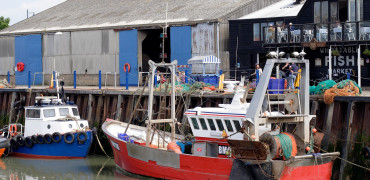This year The Open was held at Royal Birkdale, one of the World’s best courses which is famous for hosting more championships and international events since World War 2 than any other course. But beyond upholding the standards of a prestigious golf club, should clubs like the Royal Birkdale be upholding – or indeed driving the standards for sustainability?
Environmental impact of golf clubs
Many golf clubs are conscious of their environmental impact, especially to the wildlife and nature in and around the greens. They are also considerate of water usage – attempting to decrease water consumption where possible. Although with the varying weather patterns this is a major challenge.
Solutions to help with this challenge however include computer controlled irrigation systems, regular checks and affective action. In addition to this, off the course, water use in clubhouse toilets, changing rooms and kitchens should also be monitored.
Another major environmental challenge for golf clubs affects the supply chain. Essentially looking at decreasing suppliers, having bulk deliveries, effectively controlling pests and implementing sustainable waste management should be top of the scorecard.
The challenge closest to my heart however is the adoption of renewables…
Renewable technology for golf clubs
Back in 2007 (and updated in 2013) the then-new Castle Course in St Andrews was looking to heat and cool their clubhouse in the most efficient manner possible. Although there were many solutions available, the benefit of available land and water sources meant that a swing towards water cooled and ground source heat recovery systems was ideal.
The installation was undertaken and the clubhouse was fitted with an under floor heating system that connected to the renewable equipment. In addition to this effective control systems were put in place to allow the team to control and monitor the systems as efficiently as possible – maximising their energy saving potential. In fact, as with most effective use of heating and cooling controls, maintenance costs can often be reduced and response times, such as costly site visits can be avoided as problems can be logged and resolved over the internet.
Castle Course also benefits from an effective ventilation system. The Mechanical Ventilation with Heat Recovery system takes in fresh air and exhausts stale air, using heat recovery to recover over 80% of the heat from the exhaust air. This is one of the most energy efficient ways to ventilate a building and with indoor air quality being a major health issue, the health and wellbeing of members should be high priority.
The best systems can also switch to offer free night-time cooling which can help ensure the clubhouse is fresh and airy each morning. Saving on additional use of air conditioning.
In addition to all this, Castle Course has solar panels, uses electric buggies and they use a higher quality engine oil for their mowing equipment so that they can lower oil usage.
The Royal Birkdale is also mindful of its carbon footprint and this overview of energy use on golfenvironment.org explains that in 2009 the club engaged with an energy consultant to make improvements, including adding solar panels. Other cost-effective energy saving activities included electric vehicles, regular servicing of the existing air conditioning and non-renewable heating system, use of natural ventilation, and improved insulation.
For more information of sustainability and environmental protection in the golf industry please visit http://www.golfenvironment.org/
General energy saving in golf clubs
So to wrap up this article, the wedge between environmental concerns and industries like golf is getting better as the above examples show. So whether you’re an armchair golfer, a professional, or running your own club, the bullet points below will help you find a fair-way to reducing your carbon footprint:
- Look into upgrading to renewable heating and cooling solutions
- Update existing control systems – some even allow for control via Smartphones!
- Invest in ventilation systems to improve the wellbeing of staff and members
- Install energy saving or LED light bulbs
- Use solar lighting outside
- Use motion sensor or timer lighting
- Ensure any new clubhouse appliances are A rated
- Use electric vehicles and buggies
In the meantime, you don’t have to invest in new equipment if your budget won’t stretch. Educating staff will have an impact too. Lowering energy use can be as simple as remembering to switch off a light, closing an external door so the heat doesn’t escape or keeping TV monitors off during off peak times.
We hope you enjoyed watching The Open over the weekend and congratulations to Jordan Speith.
Ellina Webb is a Marketing Specialist at Mitsubishi Electric
If you have any questions about this article, you can contact us via email. Or if you would like to tweet us, please follow our MEUK_LES twitter page.
We upload new articles every week so remember to check back regularly.
You can also sign up for our monthly newsletter below.

